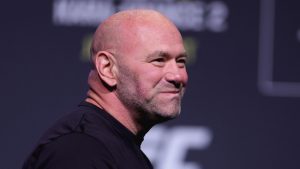This is the published version of Forbes‘ Future of Work newsletter, which offers the latest news for chief human resources officers and other talent managers on disruptive technologies, managing the workforce and trends in the remote work debate. Click here to get it delivered to your inbox every Monday!
The debate over remote work seemed to reach a fever pitch in recent weeks as news stories on topic went viral—from the bizarre “Don’t Mess With Us” WebMd parent company video to the uproar over how a baby clothing company handled a new mom’s request to work remotely while her baby was in the NICU. The news cycle on remote work, you have to admit, has been a little weird.
The war over work from home, it seems, is far from over. Yet these viral news stories appeared just as evidence from academic researchers is mounting in the ongoing debate that mandates aren’t clearly the right answer yet. As my colleague Emmy Lucas and I report, two new studies are adding rigor to the discussion over whether return-to-office mandates help companies or not. One confirms the anecdotal evidence we’ve seen that remote work boosts diversity—as well as interest from qualified and experienced workers, it turns out—and the other raises questions about whether mandates do anything to boost financial performance. (The authors’ conclusion: They don’t.)
Perhaps most interesting from the latter study is the link the researchers found between companies that set RTO mandates and had poor stock performance in the previous quarter. That fits with a recent column from Forbes contributor—and former Airbnb future of work executive—Q Hamirani, who also wrote about the research. “Mandating in-office attendance raises questions about the resulting employee behaviors and employer reactions,” Hamarini writes.
My favorite return-to-office story of recent weeks, however, has to be the exclusive interview my former editor Diane Brady got with Clearlink CEO James Clarke. Back in April 2021, Clarke called employees living within 50 miles of the digital marketing company’s headquarters to come back to the office four days a week, and when workers pushed back, Clarke held a video town hall, part of which leaked. His comments made him “look unkind, if not outright heartless,” Brady writes, appearing to rail against employees caring for kids during work hours and praise a coworker who sold the family dog amid the office return. In Brady’s interview, Clarke says the office return has been successful, but also shared the blowback he received, and how his message had gone wrong.
NEW AND NOTABLE
Walmart announced Monday that it plans to give store managers annual stock grants worth up to $20,000. The announcement, which follows an updated compensation program for store managers the retail giant introduced earlier this month, was made at the company’s annual meeting for store and supply chain leaders Monday. It will give the top store manager at each of the company’s some 4,600 U.S. stores annual grants of Walmart shares valued at up to $20,000, depending on the size and format of the store.
HUMAN CAPITAL
Tech firm layoffs rolled on, even as signs continue to point to a soft landing for the economy and stronger than expected economic output numbers. Following recent job cuts at Google, Amazon, Duolingo, Wayfair and others, Microsoft has said the company will lay off 1,900 employees across Activision Blizzard’s video game workforce, including Xbox, according to an internal memo that was first reported on by The Verge. The cuts amount to around 8% of Microsoft’s total gaming workforce of 22,000, the memo said. Forbes’ Derek Saul reached out to Microsoft for comment.
At other tech companies, CEOs are adjusting to lower valuations. Figma CEO Dylan Field, reports Forbes’ Alex Konrad, has promised to refresh employee equity packages and offered three months’ pay to those who wish to depart as its $20 billion acquisition by Adobe has been scrapped amid heightened regulatory scrutiny.
ARTIFICIAL INTELLIGENCE
Can’t keep up with all the news about generative AI? It’s been a big week. The Federal Trade Commission said it would open an investigation into deals made between big tech firms such as Microsoft, Amazon and Alphabet and AI firms like OpenAI and Anthropic. Regulators plan to look into whether the tech giants are “distorting innovation and undermining fair competition” in the market, FTC Chair Lina Khan said in a statement. Microsoft and Alphabet, in statements, said they welcomed the inquiry, while others either would not comment or did not respond to queries from Forbes.
Meanwhile, OpenAI CEO Sam Altman is seeking to raise billions to build a network of AI chip factories, Bloomberg reported. Further details are scant, Forbes reported, though if it were to succeed, the network could play a role in the ongoing chip war between the U.S. and China. For more on AI chips, don’t miss Kenrick Cai’s recent story on how chip giant Nvidia has been ramping up its lobbying efforts.
WHAT’S NEXT: STANFORD PROFESSOR AND AUTHOR BOB SUTTON
Stanford University professor Bob Sutton has written numerous management books over the years—the most memorable and well-known being The No A**hole Rule, which made a simple plea for allowing fewer jerks at work. Sutton and co-author Huggy Rao, also a Stanford professor, are out with a new book, The Friction Project, which looks at the forces in organizations that make it harder to get things done. Forbes spoke with Sutton recently about his book; excerpts from our conversation have been lightly edited for length and clarity. A slightly abbreviated version of this Q&A ran in our weekly Future of Work newsletter.
What’s causing people to feel so much more frustration and friction at work these days?
There’s a technology component to this. We call it robotic bureaucracy. There’s all of these systems that just heap tasks on us. It used to be that some middle manager would do [your expenses] for you. I would send my receipts to an assistant and the assistant would process them. Now more and more of us are having to do the work of the bureaucracy directly with software rather than having some middle manager protect us. Efficiency tools are rendering us all inefficient.
Then there is a second problem, which we barely touched on in the book, which is the size of the technology stack. It’s often a symptom of excessive decentralization. Anybody can use whatever software they want. Centralization rules work here as constraints. One of the CTOs we worked with at a medium-sized company [added a practice where] if you tried to renew or buy software, it wasn’t approved automatically. You had to give a written justification to him.
This is intentional friction. Sometimes you need some guardrails and you need to give people a speed bump. And people who lead the organization need to understand the work itself, or pretend they do and have a team who actually understands the work. We talk about the ‘L6 strategy’ in the book.
What’s that?
Todd Park, who was most famous for fixing the Obamacare website when he was CTO at the White House, said to figure out what’s going on, you go down six levels and find the people on the front line who actually understand the problem itself. That doesn’t always mean it’s exactly six levels down. But having leaders who understand the work itself is really important.
There are also certain diagnostic questions you can ask to figure out whether to make things harder. Two favorites: [Jeff Bezos likes to ask] Is it a reversible decision or not? If it’s an irreversible decision—a one-way door—you’ve got to slow down and be really careful. If it’s a two-way door, then you can go fast.
The other question to ask is whether it’s about a creative process. I just have never seen fast creativity. Everything we know about creativity is it’s a fundamentally inefficient process, especially if you’re doing it right. There might be little [things you can do]. Killing bad ideas faster. Getting people out of the room who have no idea what they’re doing but have strong opinions. But I’ve never actually seen efficient creativity, and you need to accept it’s not going to be.
Fairly or not, HR is often seen as a part of the company that adds friction. What lessons are there in your book for CHROs?
People in HR get way too much blame for adding friction, and way too little credit for eliminating it. I’ve got a lot of friends in HR who’ve been through the hell of the last four or five years. They end up being shock absorbers. They absorb the friction from the mistakes made by their dumb senior bosses. You can put that in if you want.
What I would tell people in HR to reduce friction is essentially: What are you rewarding? We call this “addition sickness” in the book. Are you rewarding the people who have bigger fiefdoms? If you are creating a system where the more people who report to a boss, the more they get paid, this is going to cause friction.
A different element of friction is when people who need to collaborate and coordinate have an incentive to treat friends like enemies. Under Satya Nadella, Microsoft’s HR has changed the reward system. So the definition of a star is somebody who does good work and helps their colleagues succeed, instead of somebody who does good work and stomps on their competitors and treats their friends like enemies. So for HR, think about what you define as a star employee in your organization. If it’s the people who hire a bunch of people who keep starting new programs, or who are buying new software, then you are making a mistake.
As human beings, we’re essentially wired to add stuff to fix problems rather than to subtract stuff. Many organizations reward people who add stuff. That’s why we make the argument that the best leaders are like film editors. They’re really good at cutting out the parts that you don’t need and focusing on the parts you do. They have that sort of subtraction mindset or editor-in-chief mindset. I’m not talking about cutting jobs. I’m talking about cutting unnecessary things that people do.
Does hybrid work make friction worse?
For every day that you bring people into the office, you are imposing more friction, less efficiency and less productivity on their life. This is a completely unoriginal thought on my part. [Stanford colleague] Nick [Bloom’s research] does the calculations.
Yet so many CEOs right now are suggesting unless we’re all in the office together, it will make things harder.
There’s no evidence for that. In fact, Nick [Bloom] has the opposite evidence. Most of the offices that they want people to come back to, they suck anyways. They’re open offices. They’re dysfunctional in all sorts of ways. I’m not saying that we should go to a completely remote work world, but there also is a lot of delusion and ideology.
FACTS AND COMMENT
Who knew there was a “burrito season”? It’s typically March through May, and is the busiest season for Chipotle, which said Wednesday it plans to hire 19,000 workers to help it through the period.
- The busy season is due to ‘seasonal factors,’ such as weather, Erin Wolford, Chipotle’s vice president of external communications, told Forbes.
- 110,000: How many people currently work at Chipotle, according to the company.
- 15,000: The size of the recruitment campaign the company launched last year in anticipation of “burrito season.”
VIDEO
STRATEGIES + ADVICE
How to manage and hire smarter—without reference checks or exit interviews.
Meeting overload is a drain on your workplace. Here’s how to fix the problem.
Side gigs are better for workers—and their organizations—than you think. Here’s why.
QUIZ
A key union backed President Joe Biden in the 2024 election this week, ending months of uncertainty over the crucial endorsement. Which union was it?
- Service Employees International Union
- National Education Association
- Teamsters
- United Auto Workers
Check your answer here.
Read the full article here





